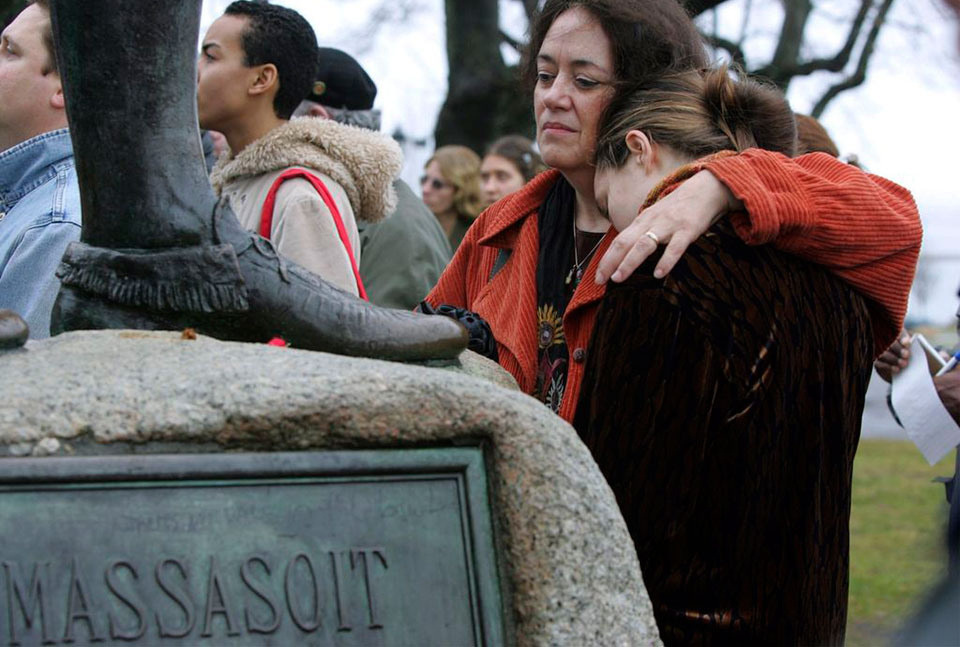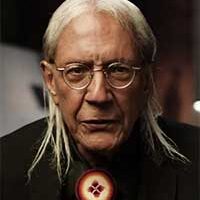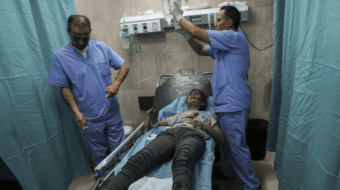
American history books discuss the “Thanksgiving” that took place between the Pilgrims and the Indigenous people in the now-Northeast United States. It can seem consoling, particularly in these times of apparent rising racial conflict, to read stories of Native people and settlers breaking bread, feasting on turkey, cranberry sauce, and other foods from the bounty of the Native homeland.
There were some kernels of truth in this vista of harmony. The Native people of the area, members of the Wampanoag Nation, which still exists, did indeed welcome these forlorn European wayfarers in 1620.
But, the Wampanoag were familiar with Europeans, who first appeared as traders as early as 1616. These first encounters were disastrous for the Indigenous peoples to whom European traders and fishermen unwittingly brought devastating pandemic plagues.
Prior to 1616, the Wampanoag population was huge, numbering some 100,000 in approximately 70 villages throughout southeastern Massachusetts and eastern Rhode Island. In fact, the early English sailors reported that the Indigenous people were so numerous that colonization would be impracticable, It was only after the deadly epidemics that the English considered attempts at settlement.
The Wampanoags had seen so many ships before the Pilgrims that these bedraggled new arrivals in 1620 were not deemed a threat and particularly because women and children were in tow. Native emissaries, Samoset and Tisquantum (Squanto in mainstream history books) befriended the English and taught them how to hunt and raise Native crops. The culmination of these contacts was a treaty entered into in March 1621, between the Wampanoags led by Massasoit and the Pilgrims.
The whole idea of a harmonious Thanksgiving could be based, in part, on the following narrative given by present-day Wampanoags.
In September/October of 1621 the Pilgrims had just finished harvesting their first crops and celebrated by firing their guns and cannons into the air. The Wampanoags, upon hearing the gunfire coming from the Pilgrim settlement, dispatched a party of 90 warriors under Massasoit to investigate and render any necessary aid to the colonists. Upon arriving at the settlement the Wampanoags were told the reason for the gunfire and invited to join in the feast.
Since there was not enough food for the warriors, Massasoit directed his party to bring in additional game to add to the celebration.
The official proclamation of Thanksgiving, 16 years later, has its origins elsewhere – in slaughter, gore and carnage.
In a proclamation issued in May 1637, Gov. John Winthrop of the Massachusetts Bay Colony announced an official “Day of Thanksgiving” to celebrate the return of the colonial militia from a massacre of a large town of the Pequot Indians in Connecticut. In this slaughter over 700 indigenous men, women and children were killed with many burned alive.
This war was followed by Metacom’s War (in mainstream history called King Philip’s War) of 1675-1678 . Metacom was the second son of the Wampanoag sachem, Massasoit, who had that happenstance “Thanksgiving” dinner, described earlier, with the Pilgrims.
Metacom’s War had its genesis in Pilgrim greed for Native land and control of Native lives. The Pilgrim population had changed since 1620 with the arrival of thousands of immigrants from England, in what has been called “The Great Migration.” They had no experience, knowledge or memories of any initial friendly interaction between Indigenous people and European newcomers.
Also, the Pilgrims were financed by a joint-stock company. This was in the days of rising capitalism. By the early 1670s the colonists had 8,000 soldiers under arms and felt enough hubris to demand that the Wampanoags disarm and surrender their sovereignty and independence. This, of course, meant war.
This war was the greatest disaster to take place in 17th Century New England and is considered to be the deadliest conflict in the history of Indian/colonist wars in proportion to the numbers of the contending populations involved. Thousands of lives were lost on each side. Twelve English towns were utterly destroyed and many more were severely damaged. The economies of Plymouth and Rhode Island were brought to ruin and the colonial population was decimated, losing, one-tenth of all males available for military service in the two colonies. The economy of the two colonies did not recover until decades later.
The Wampanoag Confederacy, the Narragansetts, and their allies were decimated with countless numbers of captured women and children sold into slavery in the West Indies, North Africa, and Europe. By the beginning of the 18th Century, the Indigenous inhabitants of New England had been reduced to an incredibly small fraction of their former huge numbers and were living in small isolated enclaves.
The war psychologically produced the mindset in the colonial population that there could be no peaceful coexistence between Indigenous and white. This was the true legacy of the “Thanksgiving” slaughter of 1637 that continued with the genocide machine that roared for over two hundred-plus bloodstained centuries, non-stop across the land that is now the United States.
From coast to coast this legacy of genocide, pain and suffering produced the desperate wars of the Midwest, the ethnic cleansings of the Trail of Tears, the crucible of bloodshed in the Southwest and the maelstrom of slaughter of California Indians where there were regularly scheduled “ Indian Hunts.” The human holocaust that had begun with the “Thanksgiving” and consumed the lives of millions of the Indigenous finally leveled off in the late 19th Century as the racist mainstream media casually referred to those who survived as the “Vanishing Americans.”
In the year 1900 federal census records tallied a Native population of only 237,196. The mass murders had finally stopped because as so aptly by one historian “There were at last almost no Indians left to kill.”
The remaining legacy of Thanksgiving is the implicit racism embodied in this false narrative holiday. It remains for all justice-minded citizens to support bringing real history to light and permanently dispel this false narrative that is so offensive to this country’s Native people.
Every Thanksgiving Day, hundreds of Indigenous from across the country gather at Cole’s Hill, overlooking Plymouth Rock, where the Pilgrims landed in 1620 for the National Day of Mourning. This is an annual tradition that began in 1970, when Wampanoag representative Wamsutta James was invited by the Commonwealth of Massachusetts to make a speech at venue celebrating the 350th anniversary of the Pilgrim’s landing and was disinvited when the event organizers, reviewing his speech beforehand, found Wamsutta had written a narrative of outrage over the atrocities committed by the Pilgrims against the Native people of the region.
Suffice it to say that the real history of this country needs to be told and debunking the Thanksgiving myth is one of the many false accounts in need of correction.










